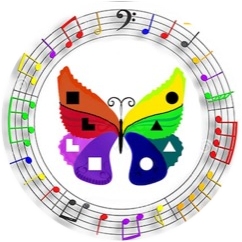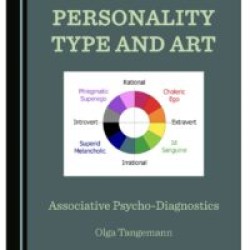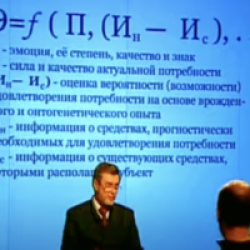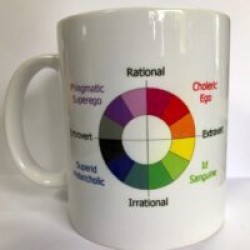V. Petrushin, in his article ‘Psychological models of reflecting the reality in art’, described the model built on associations as the ‘Butterfly’ model 5. Petrushin’s models do not have a direct relationship to Socionics. Nevertheless, there is a clear connection on the level of theory between the Associative model and Petrushin’s models. Petrushin based his models on the theory of temperaments by H. Eysenck, archetypes by Jung and psychological definitions of colours by M. Lüscher. Tangemann also borrowed from the theory of classic temperaments, linking them with the Socionics functions, music and colours.
The main difference between Tangemann’s theoretical approach and the modelling approaches by Petrushin and Gulenko, as well as some other authors interested in similar issues, is concluded in the universalism, depth and fundamentality of the Associative model, which initially goes back to Freud’s psychoanalytical conception of the components of personality structure. Turning back to the basic ideas of the founders of psychotherapy, Freud and Jung, and analysing their concepts from the point of view of Socionics made it possible to rethink their theoretical heritage and to find a new perspective as the common ground that links and mutually fulfils their views on the nature of psyche. The new theoretical approach was described in the Associative ‘Butterfly’ model and the Associative typology method 1.
An interesting part of Associative theory is the interpretation by Petrushin relating to the connection between musical character and Eysenck’s temperaments, along with the Jungian archetypes. When comparing the perspectives described by Petrushin and Tangemann, you can draw a parallel with similar ideas. For example, TPE Ego resembles the Hero archetype, which is a choleric temperament correlating to quick minor music (Marché) in the model of Petrushin. TPE Id corresponds with the Child archetype, which is a sanguine temperament correlating to quick major music (dance). TPE Superego is correlated with the archetype Old Man, a phlegmatic temperament correlating to slow major music (pray). TPE Superid is associated with the Mother archetype, a melancholic temperament correlating to slow minor music (song).
While Petrushin uses examples of classical music, Tangemann uses examples taken from popular music of various styles and trends. The latest developments and discoveries in the Petrushin’s musical therapy and in Tangemann’s Associative theory open up new opportunities in musical psychotherapy for a more effective use of knowledge of psychological type and their typical preferences in colour and music. Associative typology may be used in Socionics and psychotherapy as an instrument of psychological speed-diagnosis of the personality. Using typology as an instrument of psychodiagnosis, it will not take long for the psychotherapist or socionist to determine the psychodynamics of a client.
Psychodynamics, from the perspective of Associative theory, means the TPE profile, which consists of the leading and compensating TPEs as well as the weakest TPE – the area of energetic insufficiency which could be related to emotional imbalance. The aim of the therapist is to understand the pattern of psychodynamics from the TPEs’ distribution in the psyche, to grasp how the energy imbalance may affect the psychological wellbeing of the individual and to help the individual recover and eventually to achieve his/her potential.
According to O. Tangemann, an individual feels more comfortable in one of two TPEs, which is typical for him/ her. This is expressed in the ability to easily switch between the different emotional states that are appropriate for him/her. Half the battle for a diagnostician is in the ability to correctly determine the opposition of TPE in order to help the client effectively understand his/her psychological type and sub-type. It is important that the professionals in practical psychology and psychotherapy realise the advantage and value of Associative psychodiagnostics in order to increase therapeutic effectiveness and to search and develop new and more differentiated approaches in work with clients. According to Petrushin, “Modern musical psychotherapy’ (MP) cannot ignore the developments and methods of work with a client which are conducted or have been conducted in other psychotherapeutic approaches. The creative use of methods and other psychotherapeutic approaches can only enrich MP with new ideas” 8.
Music brings a miraculous influence to the psyche of an individual. By listening to one’s favourite music, an individual is able to adjust one’s inner world in unison with the music. Sounds are reflected in the soul of a person on the level of sensual empathy, developing the musical imagination. The energising of chakras causes work to be more consistent. Melody flows down the body like energy purifying the soul, cleansing our emotional body from impurities and unlocking the mental twists and blockages which obstruct the regular functioning of psyche. That is why it is so important to be friendly to music, searching and finding your own music and listening to it every day on the way to work, returning from work, doing the housing work. Music is the unique remedy for psychic self-regulation, supporting the psyche on the balanced and harmonised levels.
The study of Associative theory and practice, aimed at enhancing the instrument of Associative psychodiagnostics, continues to develop, whereas music is one of the most important criteria of determining the psychological type of the individual and its emotional dynamic.
Brief description of TPEs in music
TPE Ego in music corresponds to a strong, targeted and controlled energy flow, which is correlated with the characteristics of extraversion, rationality and dynamics.
TPE Id in music corresponds to a strong, uncontrolled and multidirectional energy flow, which is correlated with the characteristics of extraversion, irrationality and statics.
TPE Superego in music corresponds to a weak, targeted, controlled energy flow, which is correlated with the characteristics of introversion, rationality and statics.
TPE Superid in music corresponds to a weak, untargeted and uncontrolled energy flow, which is correlated with the characteristics of introversion, irrationality and dynamics.
Ego-music
Internal tension of rational extraverts or Ego-types goes into external tension. In music this is expressed by intense emotional energy release, a bright dynamic and sharp drops in the rhythm and contrasts of volume. Such music energises, brings you cheerfulness and gives you an impulse to action. The essence of this energy type is to actively influence the surrounding reality and to subordinate the circumstances to its will. The theme of musical compositions reflects the dominating role of Ego in the psyche of the individual, in his/her determining will and ability to withstand the external circumstances, whether they are natural disasters or another’s will. Musical images of Ego music inspire a will to confrontation, to challenge yourself, and confidence in yourself and in the likelihood of victory. Strong emotions activate the physiological processes and boost the adrenaline. That is why builders and people engaged with active work for a long time need this type of music as a natural stimulator to keep up their active tonus on an adequate level.
Ego music has a clear specified rhythm, which is supported by the energy of extraverted business logic (BL). In order to have the influence on people’s emotions there is a need for an uninterruptable stream of energy, which would remind one of a strong fountain or water stream. However, the psyche, which has been under constant pressure, cannot stand long against such power, which decreases the effectiveness of the pressure itself. That is why the periods of emotional eruptions interchange with periods of complete calmness and detachment from the object of pressure. The technique of the abrupt transition from the calm rhythm to the bursting escalation of sound is the best way to characterise the dynamics in music.
Representatives: The Phantom of the Opera”, “Notre Dame de Paris – Belle”, Antonio Vivaldi (“Storm”, “Opus 9 Concerto11”);Vanessa Mae (“Art of War “); Dmitri Hvorostovski ( «Se il cor guerriero”, A.Vivaldi»), Rolando Villazón (“La Danza”), Mirey Matie («Pardone moi», «Une Femme amoureuse»), Freddie Mercury(“The Show Must Go On”, “We Will Rock You”); Nickelback («Someday», «Rockstar»); Alexandra Burke (“Hallelujah”, “Bad Boys”); Beyoncé (“Halo”, “Listen”), Shakira (“Whenever, Wherever “,”Objection”), Mariah Carey (“ My All”, “Without You”), Tina Turner (“Simply The Best”, “River Deep Mountain High” ); Miley Cyrus (“Fly On The Wall”, “Hana Montana song -Ice cream Freez”); Gloria Gaynor (“I will survive”, “I am What I am”); Cher (“Strong Enough”, “Heart of stone”) .
Superego-music
Unlike Ego-music, Superego-music does not carry energy charge of the same strength and does not have bright and abrupt contrasts, which lead to an absence of the dynamic. Rationality as a predictability of rhythm and introversion as a weakness in power of the sound make an impression of consistency with regular repetition of musical pattern, which is correlated with statics in music.
Superego-music mostly can be likened to church music. This is calm, serious music where a person can open one’s soul, consult personal values and express one’s deepest beliefs, on the basis of which the person is building his/her life, and keeping as the main motives of his/her actions. Superego music is able to distract the individual from his/her personal problems and draw the attention to universal needs and moral values. There is no intention to impose one’s will, by all means, when struggling with the external obstacles. This music does not normally contain any of the tension or dynamics seen with Ego music, equally having no reach for endless pleasures or joyful/childishly careless states seen with Id music and having no intention to go deeper into the fantasised world and illusions of Superid music. Superego music, while peaceful and spiritual by its content, influences you to think thoroughly on your deeds, re-value your motives, and apply it with the eternal values of love and kindness in the relationship between people and in relation to some higher paradigm (God), whether it is an ideology or religion or sense of justice and order.
The issue of overcoming hardships also characterises Superego music in a similar way to Ego music, however there is no struggle with external circumstances, but a silent persistence, where righteousness and habitual routine work are valued. This righteousness concerns adherence to moral and intellectual values. Superego music looks into the themes of universal values without external and internal pressure. Music is intended to strengthen the spirit of the individual, developing the sense of self-sacrifice and subordination the highest principles and values. The feeling of universal harmony can be achieved via the everyday spiritual and physical work oriented for the progress of humanity.
Representatives: F. Schubert (“Serenade”, “Ave Maria”); Verdi(nabucco); Cliff Richard (“Millenium Prayer”, “Mistletoe and Wine”); Nil Diamond («Song Song Blue», «Hello Again»); Backstreet Boys ( «I Want It That Way», «As Long As You Love Me»); Boyzone (“No Matter What”, “Father And Son”); Demis Roussos («Because», « My Reason»); Nana Mouskouri (“Amazing grace”, “ Weiße Rosen aus Athen”); The Kelly family (“Santa Maria”).
Id-music
Irrational Id-energy is expressed in the ability to enjoy almost everything that is surrounding us. All the objects, one way or another, are able to be a source of pleasure. This particular sense was enclosed by Freud into the definition of sexual energy i.e. libido. A description of TPE Id as a component of the Freudian personality structure reflects the characteristics of Id-music the best: “Id represents the instinctual part of personality, which is responsible for satisfying the physical needs of the body, such as saturating the body with food, need in warmth and satisfying sexual desires. Id is managed by the principle of pleasure and its only aim is to achieve a momentary satisfaction. In this part of personality is always a chaos of passion: no logical thinking or comprehension of the time flow. Impulses release great energy resources, which supply energy to the whole structure of personality. Freud was comparing Id with a spoiled, egoistic child, demanding the satisfaction of its desires straight away 1.
Each personality type possesses a so-called sensor space, where we absorb subjects in a way similar to a funnel. At the same time, the subjects surround us in space and absorb us. Id energy is oriented to expand the limits of its space. Thus, there is sort of a game of endless interaction between the spaces. Permanent movement in the space causes an endless chain of pleasures in which you might be dissolved. The race for pleasure can be unreasonable, uncontrolled and dangerous for the carrier of such energy as well for those who are surrounding him/her. Certain instincts preserve the organism from similar dangers. For example, animals do not kill prey if they do not feel hungry, but play with it.
Life suggests endless opportunities for active interaction with the subjects of the surrounding space from the perspective of games and pleasure and this is reflected in the character of Id-music. Such music has strength in its performance (extroversion) and it does not carry an internal tension of struggle and opposition. The aim of this music is to charge with energy and cheerfulness, to create a mood of uncompromising joy and inspire confidence in the future. The music charges with optimism, releasing us from obsessive thoughts and anxiety and giving us an opportunity to get distracted from our problems by enjoying life as it is here and now. This ability to see the positives in everything and react to the life with bright, joyful emotions is the main mission of Id music. As a rule, unlike the Ego music, Id music does not require the concentration of attention or accumulation of energy in order to overcome any external obstacles. Life difficulties are approached from the perspective of fun, games or competitions.
Representatives: Mozart ( “Eine kleine Nachtmusik” Allegro, “Rondo Alla Turca), Kaoma (“ Lambada”), King Africa (“La Bomba “), Elvis Presley (“Jailhouse Rock”, “All Shook Up”); The Veronicas (“Untouched”, “4Ever”); A??A (“Honey Honey”, “Does Your Mother Know”); Britney Spears (Circus, Toxic); Lady Gaga (“Bad romance”, “Just dance”); Beatles (“Twist & Shout”, “She loves You”); Madonna (“Hung Up”, “Give It to Me”), Erasure (“Sometimes”, “Always”), Red Hot Chili Peppers ( Dani California).
Superid-music
Superid energy is touched with melancholy, a feeling of burden, presence of sadness and despair. It compensates and fulfils the energy of Ego, strengthening the contrast of the latter. In comparison with Ego music, Superid music possesses a weaker energy (introversion) and deep absorption into the internal world i.e. the world of subjective imagination and perceptions. It also contains more flexibility in its varied and complex patterns. Superid music can possess unusually lingering melodies because of its irrationality or, vice versa, can be characterised by a “lack” of melody and abrupt changes of rhythm. The power of emotions will not be obvious and bright. Superid is an introverted type of energy.
Superid energy is not manifested through active interactions with the surrounding reality, but is instead found by refusing to struggle and simply accepting the circumstances for the way they are. There is no intention to impose your will on others or to oppose yourself onto society. On the contrary, the ability to adapt to the external conditions is valued, as well as the intention to fit with harmony into the process of endless changes. The music reflects the state of mind and emotions of an observer who is tuned into the subtle details of the outside world. Sometimes we find a celestial comfort and, at other times, an exaggerated discomfort of sound in Superid music.
Speed and contrast of music patterns correspond to its internal tension, anxiety and melancholy which are perceived as characteristic for introverted dynamics in music: the general background of slow, quiet and introverted melody is combined with the delayed tempo (remission) and then reverses into an abrupt speed and change of the rhythm.
Representatives: Ludwig Beethoven («Moonlight Sonata», “ Symphony No.3 E-flat major, Op.55 “Eroica”); Claude Debussy (“ La Mer – Second Movement”),Amadeus Mozart(«Recviem»), Placebo (“Twenty Years”, “Sleeping with ghosts”); Pink Floyd (“Comfortably Numb”, “Hey You”); Within Temptation (“Memories”, “Stand My Ground”); Dido (« Thank You», «Life For Rent»), The Corrs («Dreams», «What Can I Do»), The Cranberries (“Dreams”, “Just my imagination”),Coldplay (“Yellow”, “Clocks”), The Verve (“Bittersweet Symphony”, Yellow), Oasis (“I’m Outta Time”, “Wonderwall”); Bjork (“All is full of love”, “Army Of Me”); Marilyn Manson (“If I Was Your Vampire”, “The Nobodies”); Muse (“Hysteria”, “Conscience”); Lacrimosa («Lacrima Mosa», «Crucifixio»); Massive Attack (“ Future Proof”, “Inertia Creeps”).
In conclusion, I would like to add that the Associative typology aims to deepen knowledge about personality differences not only on the level of 4 types of psychic energy (TPEs) but also studies musical and artistic preferences of different types related to the psychological functions such as intuition, logic, ethics and sensation. In this article, I explained the very basic level of differentiation between the 16 personality types according to their differences by type of psychic energy.










Из дискуссии ФБ:
Anna Ermolaeva Я. вообще, считаю. что люди выбирают музыку по своему внутреннему ритму. У каждого он свой. Бывает сбиваешься со своего ритма. Тогда соответствующего ритма музыка помогает в него вернуться или стабильно его поддерживать. Это и есть суть предпочтений в музыке на мой взгляд. Есть постоянный звуковой поток, как фон – это одно предпочтение. Есть “взрыв” музыкальный для чувств. эмоций – это другое предпочтение, но это не длительный фоновый ряд….
Anna Ermolaeva Juliette Nersesyan Я тоже, в основном, так делю на быструю и медленную. Но и внутри согласна с Boris Korolev есть нюансы. Для меня главное, чтобы не было чс давления, которое сразу бьёт по болевой (Роб). А оно может оказаться, как в медленной, так и в быстрой музыке.
Anna Ermolaeva Громко – это тоже ЧС. В опере часто бывают ЧС-ные арии, симфонические произведения бывают очень ЧС-ные для меня. Властная такая музыка. Сейчас не припомню, конкретно, названия. В хард-роке тоже попадаются. Высоцкого долго слушать не могу, Шнурова, тоже ЧС.
Hi there, what do you think about the role of vocal here? Like does one TPE prefer instrumental to vocalized music?
Hi, tellmefis. Sorry for delay with a reply – did not see your question until now.
I noticed very slight preference of instrumental music compared to vocal music in logical rational types LSI, LIE but I also noticed it as a preference for IEE type. It is not possible right now to drew any conclusions because I do not have statistics. I have also read the article about research into music preferences by D.Greenberg from Oxford University. According to his research ethical types prefer mellow and vocal music which is sort of true as this music appears often in the ethical type’s preferences. However, I think it is too early to talk about this, it is not something very noticable that some types prefer vocals and the other instrumental. It can be misleading if we use it as a criteria for any type.